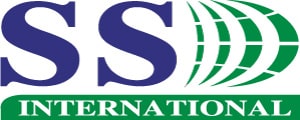
Blood pressure management is a critical component of healthcare, influencing the prevention and treatment of conditions such as hypertension, heart disease, and stroke. Digital blood pressure monitors have become indispensable tools in both clinical settings and home environments. This article explores how these devices are revolutionizing healthcare by improving diagnostic accuracy, enhancing patient engagement, and supporting telemedicine initiatives.
রক্তচাপ ব্যবস্থাপনা স্বাস্থ্যসেবার একটি গুরুত্বপূর্ণ উপাদান, যা উচ্চ রক্তচাপ, হৃদরোগ এবং স্ট্রোকের মতো অবস্থার প্রতিরোধ ও চিকিত্সাকে প্রভাবিত করে। ডিজিটাল রক্তচাপ মনিটরগুলি ক্লিনিকাল সেটিংস এবং বাড়ির পরিবেশ উভয় ক্ষেত্রেই অপরিহার্য হাতিয়ার হয়ে উঠেছে। এই নিবন্ধটি অনুসন্ধান করে যে কীভাবে এই ডিভাইসগুলি ডায়াগনস্টিক নির্ভুলতা উন্নত করে, রোগীর ব্যস্ততা বৃদ্ধি করে এবং টেলিমেডিসিন উদ্যোগকে সমর্থন করে স্বাস্থ্যসেবায় বিপ্লব ঘটাচ্ছে।
Enhanced Accuracy and Reliability
Digital blood pressure monitors have advanced significantly in terms of accuracy and reliability. Equipped with smart technologies, these devices minimize human error and the inconsistencies often associated with manual readings taken by healthcare professionals. Many digital monitors now feature advanced algorithms and sensors that detect blood flow and heart rate more precisely, providing clinicians and patients with data they can trust.
ডিজিটাল রক্তচাপ মনিটরগুলি যথার্থতা এবং নির্ভরযোগ্যতার ক্ষেত্রে উল্লেখযোগ্যভাবে অগ্রসর হয়েছে। স্মার্ট প্রযুক্তির সাথে সজ্জিত, এই ডিভাইসগুলি মানুষের ত্রুটি এবং স্বাস্থ্যসেবা পেশাদারদের দ্বারা নেওয়া ম্যানুয়াল রিডিংয়ের সাথে সম্পর্কিত অসঙ্গতিগুলিকে কমিয়ে দেয়। অনেক ডিজিটাল মনিটরে এখন উন্নত অ্যালগরিদম এবং সেন্সর রয়েছে যা রক্তের প্রবাহ এবং হৃদস্পন্দনকে আরও সুনির্দিষ্টভাবে সনাক্ত করে, চিকিত্সক এবং রোগীদের তারা বিশ্বাস করতে পারে এমন ডেটা সরবরাহ করে।
Increased Accessibility and Patient Empowerment
The accessibility of digital blood pressure monitors allows patients to take control of their health outside the clinical environment. Easy-to-use interfaces and portable designs enable individuals to monitor their blood pressure at home regularly, fostering greater self-management of hypertension. This accessibility not only empowers patients but also helps in early detection of potential health issues, allowing for timely medical intervention.
ডিজিটাল রক্তচাপ মনিটরের অ্যাক্সেসিবিলিটি রোগীদের ক্লিনিকাল পরিবেশের বাইরে তাদের স্বাস্থ্যের নিয়ন্ত্রণ নিতে দেয়। সহজে ব্যবহারযোগ্য ইন্টারফেস এবং পোর্টেবল ডিজাইন ব্যক্তিদের বাড়িতে নিয়মিত তাদের রক্তচাপ নিরীক্ষণ করতে সক্ষম করে, উচ্চ রক্তচাপের বৃহত্তর স্ব-ব্যবস্থাপনাকে উৎসাহিত করে। এই অ্যাক্সেসিবিলিটি শুধুমাত্র রোগীদের ক্ষমতায়নই করে না বরং সম্ভাব্য স্বাস্থ্য সমস্যাগুলির প্রাথমিক সনাক্তকরণেও সাহায্য করে, যা সময়মত চিকিৎসা হস্তক্ষেপের অনুমতি দেয়।
Support for Telemedicine and Remote Monitoring
As telemedicine continues to grow, digital blood pressure monitors play a crucial role in facilitating remote healthcare services. These devices can transmit measurements directly to healthcare providers in real-time, enabling ongoing monitoring of patients’ conditions without the need for physical office visits. This capability is particularly beneficial for rural or underserved populations, as well as for patients with mobility limitations.
টেলিমেডিসিন ক্রমাগত বৃদ্ধির সাথে সাথে, ডিজিটাল রক্তচাপ মনিটরগুলি দূরবর্তী স্বাস্থ্যসেবা পরিষেবাগুলিকে সহজতর করার জন্য একটি গুরুত্বপূর্ণ ভূমিকা পালন করে৷ এই ডিভাইসগুলি বাস্তব সময়ে স্বাস্থ্যসেবা প্রদানকারীদের কাছে সরাসরি পরিমাপ প্রেরণ করতে পারে, শারীরিক অফিস পরিদর্শনের প্রয়োজন ছাড়াই রোগীদের অবস্থার চলমান পর্যবেক্ষণ সক্ষম করে। এই ক্ষমতা বিশেষ করে গ্রামীণ বা অপ্রতুল জনসংখ্যার জন্য উপকারী, সেইসাথে গতিশীলতা সীমাবদ্ধ রোগীদের জন্য।
Cost-Effectiveness and Efficiency
Digital blood pressure monitors contribute to cost savings in healthcare by reducing the need for frequent doctor visits and hospitalizations due to better managed and controlled blood pressure levels. They also save time for healthcare providers by offering quick and easy assessments of patient blood pressure, allowing for more efficient patient management.
ডিজিটাল রক্তচাপ মনিটরগুলি ভালভাবে পরিচালিত এবং নিয়ন্ত্রিত রক্তচাপের মাত্রার কারণে ঘন ঘন ডাক্তারের পরিদর্শন এবং হাসপাতালে ভর্তির প্রয়োজনীয়তা হ্রাস করে স্বাস্থ্যসেবায় খরচ সাশ্রয়ে অবদান রাখে। তারা রোগীর রক্তচাপের দ্রুত এবং সহজ মূল্যায়নের প্রস্তাব দিয়ে স্বাস্থ্যসেবা প্রদানকারীদের জন্য সময় বাঁচায়, আরও দক্ষ রোগী পরিচালনার অনুমতি দেয়।
Integration with Health Management Systems
Many digital blood pressure monitors can integrate seamlessly with electronic health records (EHRs) and other health management systems. This integration facilitates the comprehensive tracking of a patient’s health data, enabling healthcare providers to make more informed decisions based on long-term trends and data analytics. It also supports holistic management of a patient’s condition, considering blood pressure readings in conjunction with other vital signs.
অনেক ডিজিটাল রক্তচাপ মনিটর ইলেকট্রনিক হেলথ রেকর্ডস (EHRs) এবং অন্যান্য স্বাস্থ্য ব্যবস্থাপনা সিস্টেমের সাথে নির্বিঘ্নে একত্রিত করতে পারে। এই ইন্টিগ্রেশন রোগীর স্বাস্থ্য ডেটার ব্যাপক ট্র্যাকিংয়ের সুবিধা দেয়, স্বাস্থ্যসেবা প্রদানকারীদের দীর্ঘমেয়াদী প্রবণতা এবং ডেটা বিশ্লেষণের উপর ভিত্তি করে আরও সচেতন সিদ্ধান্ত নিতে সক্ষম করে। এটি অন্যান্য অত্যাবশ্যক লক্ষণগুলির সাথে একত্রে রক্তচাপের রিডিং বিবেচনা করে রোগীর অবস্থার সামগ্রিক ব্যবস্থাপনাকেও সমর্থন করে।
Conclusion
Digital blood pressure monitors are more than just gadgets; they are integral tools that are reshaping healthcare practices around the globe. By improving accuracy, empowering patients, supporting remote healthcare, and integrating with broader health management systems, these monitors are helping to build a more efficient, accessible, and proactive healthcare landscape. As technology advances, the potential for these devices to further enhance health care delivery and patient outcomes continues to expand, marking a promising future for digital health technology.
ডিজিটাল ব্লাড প্রেসার মনিটর শুধু গ্যাজেটের চেয়ে বেশি; এগুলি অবিচ্ছেদ্য সরঞ্জাম যা বিশ্বজুড়ে স্বাস্থ্যসেবা অনুশীলনকে পুনর্নির্মাণ করছে। নির্ভুলতা উন্নত করে, রোগীদের ক্ষমতায়ন করে, দূরবর্তী স্বাস্থ্যসেবা সমর্থন করে এবং বৃহত্তর স্বাস্থ্য ব্যবস্থাপনা সিস্টেমের সাথে একীভূত করে, এই মনিটরগুলি আরও দক্ষ, অ্যাক্সেসযোগ্য এবং সক্রিয় স্বাস্থ্যসেবা ল্যান্ডস্কেপ তৈরি করতে সহায়তা করছে। প্রযুক্তির অগ্রগতির সাথে সাথে, এই ডিভাইসগুলির স্বাস্থ্যসেবা সরবরাহ এবং রোগীর ফলাফলকে আরও উন্নত করার সম্ভাবনা প্রসারিত হতে থাকে, ডিজিটাল স্বাস্থ্য প্রযুক্তির জন্য একটি প্রতিশ্রুতিশীল ভবিষ্যত চিহ্নিত করে।
